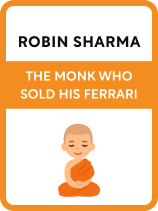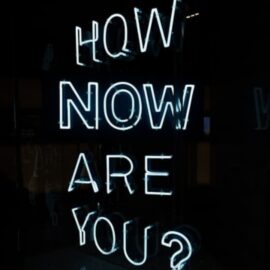

This article is an excerpt from the Shortform book guide to "The Monk Who Sold His Ferrari" by Robin Sharma. Shortform has the world's best summaries and analyses of books you should be reading.
Like this article? Sign up for a free trial here .
What is the Diamond Way in The Monk Who Sold His Ferrari? How does the Diamond Way teach you how to live in the now?
The Diamond Way is a concept from The Monk Who Sold His Ferrari. It encourages you to learn how to live in the now because it is critical for happiness.
Keep reading for more about the Diamond Way and the importance of living in the present.
Living in the Present Is the Diamond Way
The last metaphor from Yogi Raman’s fable is the Diamond Way, which represents living in the moment. Fully experience and enjoy each moment as it comes and goes. Slow down and take the time to appreciate what’s around you.
The Diamond Way stretches out into the distance because happiness is a process, not a goal. While it’s important to have goals and dreams, don’t sacrifice the little joys and pleasures of life to reach them. Live your life now, not at some uncertain time in the future like after retirement or winning the lottery.
How to Live in the Now
Again, do not worry about the past or fear the future if you want to follow the Diamond Way. That’s how to live in the now. This ties into the concept of a focused mind from Chapter 7—distracting yourself with worries and fears is draining, while putting all of your energy into the present moment is invigorating. When you are doing something that you love or that is meaningful to you, you’ll be able to concentrate fully on it and be empowered by doing so. Many of the previous lessons will also help you to be more present and appreciative in each moment as it passes. For example, the Heart of the Rose is all about eliminating distracting thoughts.
Remember, money is not the key to happiness. The Sages of Sivana are certainly not concerned with their bank accounts or stock portfolios. Even in hard times—or especially then—give thanks for all that you might still have.
Perhaps you have abundant health, either mental or physical. Consider your family and friends, the people who love you no matter how much or how little money you have. Perhaps you have a strong work ethic, something to ensure that you always land on your feet. If you have dreams and goals, you have a reason to keep striving. Finally, never overlook the small pleasures of life, like a hot cup of coffee or the sound of birds singing in the morning.
The Magic Ball of Thread
Julian tells another story. This one is about a boy who was given a magic ball of thread. By pulling on the thread, he could make hours, days, or years pass by in an instant. However, the boy was never happy with the present. He kept pulling until he realized with despair that he was now an old man who had never lived his life.
The man went back to where he got the thread and was granted a wish, which he used to return to his childhood and do it all over again the right way. However, life isn’t a story and we aren’t that boy—we only get one chance. (Shortform note: The Adam Sandler movie Click is a more modern take on the same lesson.)
The Final Lesson
Julian’s last lesson is about Nirvana, a state of perfect happiness and contentment. When you reach Nirvana, everything is beautiful and there’s no pain. This is the ultimate goal of everything Julian has said and taught. You will know you’ve reached that stage when you start to notice the divinity in everything around you, from the bloom of a flower to the laugh of a child.
After sharing that final lesson, Julian embraces John and walks out into the morning sun. All he leaves behind is his empty teacup. This serves as a reminder of the Empty Cup and a symbol that Julian’s own cup is still empty in spite of—or because of—all he’s learned.
Similarly, all of us must remember to keep our cups empty, so we can endlessly fill them with new lessons.

———End of Preview———
Like what you just read? Read the rest of the world's best book summary and analysis of Robin Sharma's "The Monk Who Sold His Ferrari" at Shortform .
Here's what you'll find in our full The Monk Who Sold His Ferrari summary :
- Why your career success might actually be killing you
- How to live a simple and fulfilling life
- The 10 rituals you should practice for health and healing






